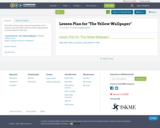
This link is a lesson plan centered around the role of women in the early 20th century and the stigma placed on mental illness at the time.
- Subject:
- English Language Arts
- Material Type:
- Lesson Plan
- Date Added:
- 09/09/2015
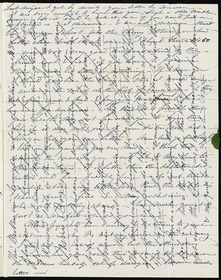

This link is a lesson plan centered around the role of women in the early 20th century and the stigma placed on mental illness at the time.

This unit engages students in a variety of activities that analyze and reflect on the role of social media in our everyday lives. This includes options for collaborative group work, reading nonfiction articles, a design challenge and presentations to communicate ideas. The unit also includes a formal writing assessment option that aligns with the Common Core State Writing Standards. Activities can be adapted or combined in a variety of ways to support student reflection and analysis. These lessons were piloted in 9th grade English classes but are suitable or a range of secondary students.
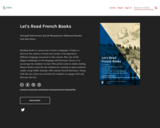
Short Description:
Reading books is a great way to learn a language. It helps to discover the culture, to learn new words, to be exposed to different language structures in the context. But, one of the biggest challenges in the language and literature classes is to encourage the students to read. This project aims to make reading literary books easier for the students by creating an open textbook reader using Public Domain 19th century French literature. Along with the text, there are activities for students to engage with and discover the text.
Word Count: 37020
ISBN: 978-0-88865-455-7
(Note: This resource's metadata has been created automatically by reformatting and/or combining the information that the author initially provided as part of a bulk import process.)
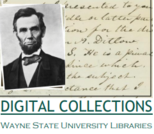
Students examine the collection of letters sent to President Abraham Lincoln from citizens. The students read and analyze the letters to gain a deeper understanding of the challenges faced by President Lincoln separate from the ongoing Civil War. Across a series of activities and tasks, students develop an argument on the importance of politics and favors in the Lincoln administration and culminate the lesson by creating an essay summarizing their evidence and argument. Letters used in the lesson are from the Wayne State University Digital Collection, The Lincoln Letters.
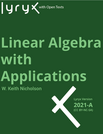
After being traditionally published for many years, this formidable text by W. Keith Nicholson is now being released as an open educational resource and part of Lyryx with Open Texts! Supporting today’s students and instructors requires much more than a textbook, which is why Dr. Nicholson opted to work with Lyryx Learning.
Overall, the aim of the text is to achieve a balance among computational skills, theory, and applications of linear algebra. It is a relatively advanced introduction to the ideas and techniques of linear algebra targeted for science and engineering students who need to understand not only how to use these methods but also gain insight into why they work.
The contents have enough flexibility to present a traditional introduction to the subject, or to allow for a more applied course. Chapters 1–4 contain a one-semester course for beginners whereas Chapters 5–9 contain a second semester course. The text is primarily about real linear algebra with complex numbers being mentioned when appropriate (reviewed in Appendix A).
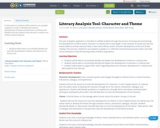
In this resource, students will be asked to use a graphic organizer in order to identify and track the development of theme and character in a literary text. Students will use evidence from the text to construct an evidence based response.
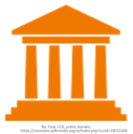
Local government is the government of people’s daily lives. It is your local government that you will interact with most throughout your daily life. In this seminar, you will learn about the role of local government in a community. By the end of this seminar, you will be able to discuss how local government and community members work together. You will be able to compare the structure of local government as a whole to the structure of the government in your community.Standards5.1.4 C - Explain the principles and ideals shaping local and state government.

This is a review activity after students have read chapters fourteen and fifteen in Ishmale Beah's A Long Way Gone.
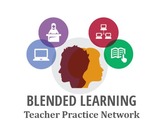
During this problem-based blended learning module students will be designing their dream bedroom as well as creating a scale drawing of the items they chose to be in their bedroom. The launch activity introduces the students to Scale City, which is a video that explores scale models in the real world. Students are then given dimensions for a fictional bedroom to furnish with items of their choosing. Price is not considered in this module, but a budget could be introduced as an extension of the module. Students will then spend time researching items that they would want to place in their bedroom with the area constraints given. Students will have the opportunity to provide each other peer feedback on their bedroom designs. Once students have a rough idea of their bedroom design, they will spend some time creating a scale drawing of their bedroom on graph paper. This will give students the opportunity to use a scale factor to create a scale drawing. Students will again be provided feedback on their designs and be given time to reflect and redesign as needed. If students need extra time to practice using a scale factor and creating scale models, a station rotation lesson has been included as an optional resource.
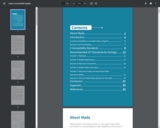
This guide will identify E-accessibility standards in the specified domains of:
1. Websites
2. Mobile applications
3. Electronic documents
4. Media (video and audio)
5. Electronic kiosks and automated teller machines (ATMs)
6. Text and video relay services for the deaf

Description:Transform your students into anthropologists as a gateway to Macbeth.Students answer prediction questions using evidence from the artifacts. (Artifacts include images, letters from the text, and character maps.)Students can complete this activity alone or in breakout groups.

ICT accessibility and inclusive design is considered as a relevant and essential topic that needs to be well covered and integrated within capacity building, training and education curricula and programmes. Despite this urgent need, there is a lack of integration of ICT-AID aligned courses in educational institutions and professional development services based on a comprehensive Global competency framework delimiting all required relevant competencies and capabilities in the field of ICT accessibility and Inclusive Design. It is in this context that Mada center has developed an open competency framework in a bid to guide globally training of students and workers on ICT accessibility and inclusive design, so that they will be well prepared to excel in their accessibility professions and contribute in the creation of accessible products, contents and services.

The attached lesson plan is designed for Grade 9-10 English Language Arts students. Students will analyze and evaluate the elements of literary text, build background knowledge to clarify text and deepen understanding, and use relevant evidence from a variety of sources to assist in analysis and reflection of complex text. This Remote Learning Plan addresses the following NDE Standard: NE LA 10.1.6l, NE LA 10.1.6L, and NE LA 10.1.6N It is expected that this lesson plan will take students 50 minutes to complete.

Goal/Objective:The students will construct meaning of an informational text while developing a multicultural perspective. Overview:This comprehension lesson focuses on a variety of reading skills, including making predictions and inferences, comparing/contrasting, answering inferential/critical questions, applying context clues and word structure to determine the meaning of words, and making text-to-self/text-to-world connections. All of these skills are taught alongside students learning about the Civil Rights Movement, the impact it has had on our nation, and the importance behind the story of Ruby Bridges.Grade Level:This lesson focuses on 4th grade standards, but can be adapted for any upper elementary classroom. Modifications/Accommodations:This lesson can be modified/accommodated for students with special needs. The lesson is derived from the ReadWorks.org website. If teachers create a free account to the website, students can have the passage, as well as the comprehension questions, read aloud to them.
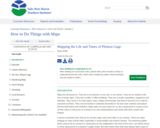
In this unit I will be utilizing maps in my classroom to help students comprehend a nonfiction text that explores the development of nineteenth century brain science through the story of Phineas Gage, a railroad worker who is almost killed in an explosives accident. Although relatively brief, the book introduces a number of science-related concepts that can be difficult to grasp. I believe that using maps in the reading will help bridge gaps that students might have in fully understanding the story and its ramifications to nineteenth century brain science.
Maps are perfect for any lesson in any classroom, and if you look hard enough you can find a way to use a map for any lesson you are teaching, in any subject and for any age group. Maps are a perfect classroom tool that can and should be utilized to help students get better understanding of material on their own learning level. They are a natural tool for differentiation. They can be simple or very complex, they can include illustrations, numbers, symbols and signs. They can be colorful or plain. They can be made of an endless number of materials and used to interpret endless subjects and topics. They can be created with a crayon and a piece of paper, or the most powerful satellites mankind has ever known, and everything in between.

This plan was created by Jean Harper as part of the 2020 ESU-NDE Learning Plan Project. Educators worked with coaches to create plans.The attached plan is designed for Grade 6 English Language Arts students. Students will read and comprehend texts that are complex.. This plan addresses the following NDE Standard: NE LA 6.1, LA 6.1.6.f, LA 6.1.6.oIt is expected that this plan will take students 60 minutes to complete.

Grade Level is 7.6 using the Flesch-Kincaid readability test.
This is the challenging and inspired true story of a little girl who was determined to learn to read, and who went on to be a teacher, the founder of a college, an adviser to statesmen, and a great humanitarian. Mary McLeod Bethune was the fifteenth child of hardworking and god fearing parents. She was the first of their children to be born free. Her ancestry was wholly of African origin, a point of pride throughout her life.
Mrs. Bethune worked untiringly to restore—through education—her people's faith in the magnificent heritage that is rightfully theirs. During the many years of and tribulation, she refused to give up her fondest dream—her own school for Negro children. And, as a shining monument to her hard work and faith, she has given to black youth the thriving institution of Bethune- Cookman College in Daytona Beach, Florida.
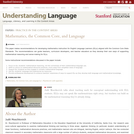
This paper makes recommendations for developing mathematics instruction for English Language Learners (ELLs) aligned with the Common Core State Standards. The recommendations can guide teachers, curriculum developers, and teacher educators as they develop their own ways of supporting mathematical reasoning and sense-making for ELLs.Some instructional recommendations discussed in the paper include: Focus on ELL students' mathematical reasoning, not the correctness of their mathematical language use. Shift to a focus on mathematical discourse practices; move away from simplified views of language. Support ELL students as they engage in complex mathematical language. Use ELL students' language and experiences as resources. Provide professional development to enhance teachers' awareness of ways to support ELs as they develop both language and mathematical knowledge.
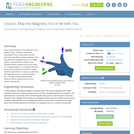
This lesson begins with a demonstration of the deflection of an electron beam. Students then review their knowledge of the cross product and the right hand rule with sample problems. After which, students study the magnetic force on a charged particle as compared to the electric force. The following lecture material covers the motion of a charged particle in a magnetic field with respect to the direction of the field. Finally, students apply these concepts to understand the magnetic force on a current carrying wire. Its associated activity allows students to further explore the force on a current carrying wire.
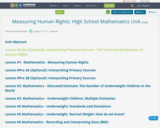
In this unit, students will read and interpret primary sources to address the question “How do we measure the attainment of human rights?” By exploring the Universal Declaration of Human Rights, the UN’s Guide to Indicators of Human Rights, and data about development indicators from multiple databases, students will unpack the complexities of using indicators to measure human rights.